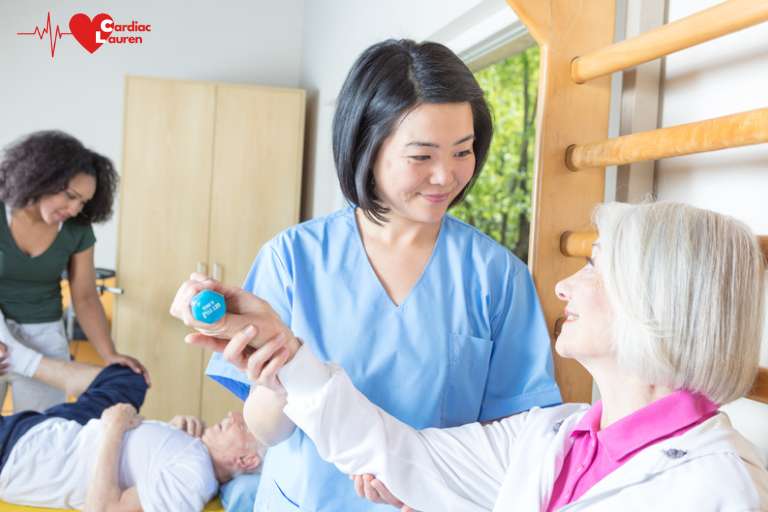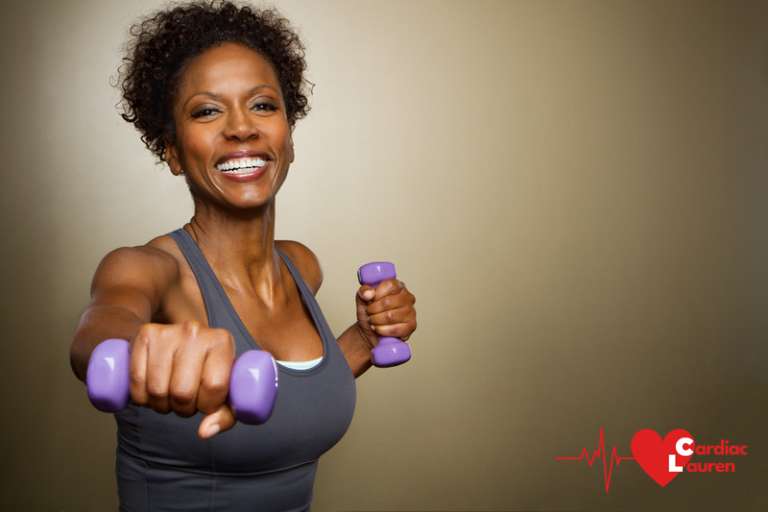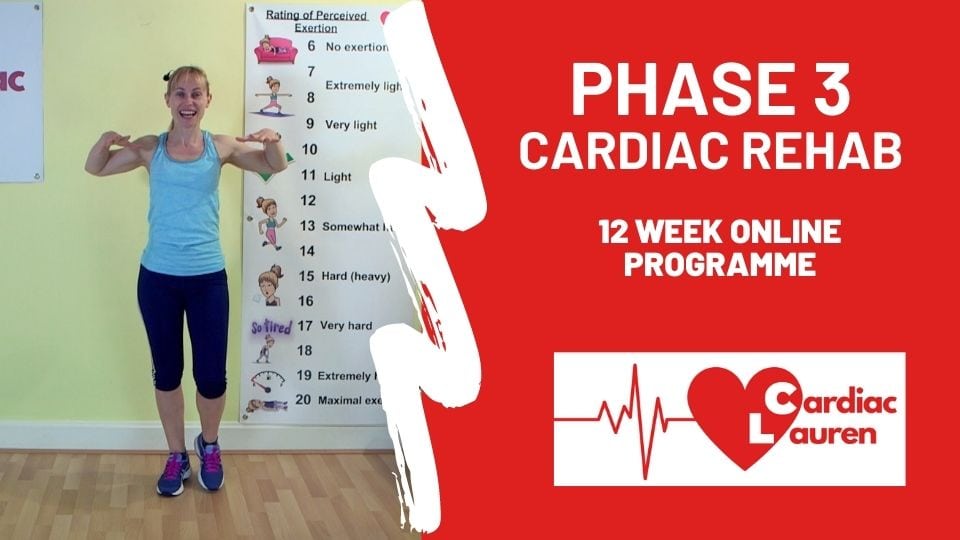What Is Phase 3 (aka Phase III)?
Phase 3 is where you will start a comprehensive cardiac rehabilitation programme, predominantly with your local NHS team. This is different from Phase 2, where you are still recovering, understanding and adapting to your diagnosis.
In Phase 3, education, exercise and support from a multidisciplinary team are put together in a 4–12-week programme. The primary goal of Phase 3 cardiac rehabilitation is to help individuals return to their normal daily activities and improve their overall health and well-being.

Participants may attend organised sessions in their local hospital, medical centre, a local gym, or community hall to receive Phase 3 care. Some attend once a week, others twice, or more. Many people are now offered hybrid programmes of a mix of online and face-to-face classes, as well as phone apps and computer websites to guide them through the whole cardiac rehabilitation process.
The main aims of Phase III are to:
- Educate you about your condition – why it happened and how to prevent it from happening again.
- Educate and support you on any changes you need to make to your lifestyle – such as diet, stopping smoking, losing weight, exercising more, lowering stress levels, managing blood sugar levels (if you are diabetic) and reducing alcohol intake.
- Support your mental well-being and manage anxiety and stress.
- Encourage you to be more active in everyday life.
- Be able to achieve 20 minutes of continuous cardiovascular exercise.
- Be able to monitor yourself whilst exercising so it remains at a safe intensity level.
- Understand what and why you take the medication you have been given.
- Learn to live with your condition and for it to not be a reason to stop doing many of the things you did before or would like to do in the future.
Each Phase 3 programme is set up by the local NHS team; therefore, they differ around the country. Some have access to cardiologists, nutritionists, psychologists, pharmacists, and other specialists, whereas others just have cardiac nurses, physiotherapists, and exercise professionals on the team. No matter what the makeup of the team, each follows the BACPR Core Components and Standards (2023) and participates in the NACR (National Audit of Cardiac Rehabilitation) and is monitored regularly.
What Happens In Phase 3?
Everyone who attends Phase 3 will have an initial assessment with the cardiac nurse and exercise professional. A full medical case history is taken, risk factors assessed, initial measurements of weight, waist, stress levels and anxiety are taken and they will participate in a functional capacity exercise test. With this data, a baseline for each patient is recorded and their journey through the programme can be tailored to them. Progress is then made at the correct pace and goals may be celebrated along the way.
All of this information will be monitored and retaken throughout the Phase 3 programme as well as at the end. This is where participants generally see their risk factors for a further event reduced, and even though it may only be after a few weeks, fitness levels increased, plus general overall health and well-being improved.
What Exercise Is Done In Phase 3?
Everyone who attends Phase 3 will have a different experience of exercise from the past. Some people haven’t done any formal exercise since they were at school, may have stopped playing a sport when they had children, or are very active attending the gym, running or cycling regularly.
Each programme will cater for all abilities taking into account co-morbidities people may have (co-morbidities refer to the presence of two or more medical conditions or diseases in a person at the same time. For example, someone with angina may also have diabetes, high blood pressure and knee pain).

In terms of exercise, some Phase 3 cardiac rehab programmes are based in a gym or have gym equipment (bikes, treadmills, rowing machines, steppers etc), whilst others will have a circuit format using weights, resistance bands, steps and your own body weight. No method is better than the other, especially as the main aim is to achieve 20 minutes of continuous aerobic exercise, and each participant will be exercising at a different intensity from the other.
Here, patients will become very familiar with RPE, which stands for Rating of Perceived Exertion. This is a subjective measure of how hard someone feels they are exercising – to help people gauge their intensity level during physical activity. Anywhere between RPE 11 & 14 is generally desired – i.e. ‘fairly light’ to ‘somewhat hard’.
What Happens After Phase 3?
At the end of the Phase 3 programme, everyone will have a better understanding of their condition and how to live with it. For most people, apart from having to take medication daily, their lives can continue as before with the new lifestyle changes they have put in place. For some, their condition requires regular monitoring, but this does not mean they cannot continue to progress on their cardiac rehabilitation journey. If anyone is waiting for a medical procedure, being as fit and healthy as possible pre-operation is extremely beneficial and will make recovery a quicker experience.
When someone finishes Phase 3, they will be able to monitor themselves safely. This means they can continue onto a Phase 4 class or online programme, join a local exercise class, go to the gym or other forms of exercise such as dancing, cycling, badminton or tennis, gardening, walking groups, and for some swimming.
When a participant chooses to move to Phase 4 – which are specialist exercise classes run by exercise instructors or physiotherapists who are qualified to prescribe safe and effective exercise for cardiac rehab patients – they can push themselves a bit more and start things like resistance (weight) training and join in with longer exercise classes. After Phase 3, 30 minutes of continuous exercise is now seen as the baseline to improve and maintain good health.
Phase 3 Cardiac Rehab Online
This 12 week programme is suitable for anyone attending their NHS Phase 3 Cardiac Rehabilitation service who would like to follow safe and effective exercise videos suitable for their heart condition at home.

The programme covers all of Phase 3 levels 1-6, with two workout classes per level. It also includes an introduction to exercise and explanation of the RPE scale, giving you a total of 14 videos.
Each class video consists of a 15-minute warm-up, 20 minutes of exercise and a 10-minute cool-down.
Cardiac Lauren members get ongoing access to this class as part of their membership.
It is also available FREE to NHS Phase 3 patients – just ask your Phase 3 team for a referral code!
Please work at the level your Cardiac Rehabilitation team advised, use light weights if advised to and be able to pace yourself with the RPE Scale.
If you feel unwell or require alternative exercises, speak to your contacts in Phase 3.

